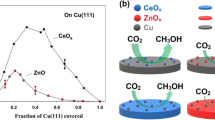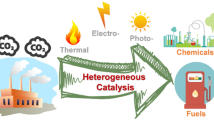Abstract
The chain length and hydrocarbon type significantly affect the production of light olefins during the catalytic pyrolysis of naphtha. Herein, for a better catalyst design and operation parameters optimization, the reaction pathways and equilibrium yields for the catalytic pyrolysis of C5–8n/iso/cyclo-paraffins were analyzed thermodynamically. The results revealed that the thermodynamically favorable reaction pathways for n/iso-paraffins and cyclo-paraffins were the protolytic and hydrogen transfer cracking pathways, respectively. However, the formation of light paraffin severely limits the maximum selectivity toward light olefins. The dehydrogenation cracking pathway of n/iso-paraffins and the protolytic cracking pathway of cyclo-paraffins demonstrated significantly improved selectivity for light olefins. The results are thus useful as a direction for future catalyst improvements, facilitating superior reaction pathways to enhance light olefins. In addition, the equilibrium yield of light olefins increased with increasing the chain length, and the introduction of cyclo-paraffin inhibits the formation of light olefins. High temperatures and low pressures favor the formation of ethylene, and moderate temperatures and low pressures favor the formation of propylene. n-Hexane and cyclohexane mixtures gave maximum ethylene and propylene yield of approximately 49.90% and 55.77%, respectively. This work provides theoretical guidance for the development of superior catalysts and the selection of proper operation parameters for the catalytic pyrolysis of C5–8n/iso/cyclo-paraffins from a thermodynamic point of view.

Similar content being viewed by others
Abbreviations
- \({\Delta _{\rm{f}}}H_{\rm{m}}^\theta \) :
-
Standard molar formation enthalpy, kJ
- T :
-
Reaction temperature, K
- C p,m :
-
Molar heat capacity at constant pressure, J·mol−1 ·K−1
- \({\Delta _{\rm{f}}}S_{\rm{m}}^\theta \) :
-
Standard molar formation entropy, J·K−1
- C p,m,i :
-
Contribution value of each group to the Cp,m
- N i :
-
The number of groups
- \({\Delta _{\rm{r}}}H_{\rm{m}}^\theta \) :
-
Standard molar reaction enthalpy, kJ
- \({\Delta _{\rm{r}}}S_{\rm{m}}^\theta \) :
-
Standard molar reaction entropy, J·K−1
- \({\Delta _{\rm{r}}}G_{\rm{m}}^\theta \) :
-
Standard molar reaction Gibbs free energy, kJ
- K θ :
-
Standard equilibrium constant
- R :
-
Molar gas constant, J·mol−1 ·K−1
- G t :
-
Total Gibbs free energy of mixed system, kJ
- n t :
-
Numbers of moles of species i
- μ i :
-
Chemical potential of species i
- λ k :
-
Lagrange multiplier of the kth element
- β ki :
-
Number of atoms of the kth element in a mole of the ith species
- b k :
-
Total moles of the kth element, mol
- \(\Delta G_{i,{\rm{f}}}^\theta \) :
-
Standard mole generation Gibbs free energy of species i, kJ·mol−1
- P :
-
Total hydrocarbon pressure, MPa
- P θ :
-
Standard pressure, MPa
References
Kubo K, Takahashi T, Iida H, Namba S, Igarashi A. Reactivities of C6–8 hydrocarbons and effect of coexistence of another hydrocarbon in cracking on H-ZSM-5 catalyst at high temperatures. Applied Catalysis A: General, 2014, 482: 370–376
Wattanapaphawong P, Reubroycharoen P, Mimura N, Sato O, Yamaguchi A. Effect of carbon number on the production of propylene and ethylene by catalytic cracking of straight-chain paraffins over phosphorus-modified ZSM-5. Fuel Processing Technology, 2020, 202: 106367
Ren L, Wang B, Lu K, Peng R, Guan Y, Jiang J, Xu H, Wu P. Selective conversion of methanol to propylene over highly dealuminated mordenite: Al location and crystal morphology effects. Chinese Journal of Catalysis, 2021, 42(7): 1147–1159
Bai Y, Zhang G, Liu D, Zhang Y, Zhao L, Gao J, Xu C, Meng Q, Gao X. The advance in catalytic pyrolysis of naphtha technology using ZSM-5 as catalyst. Applied Catalysis A: General, 2021, 628: 118399
Chen F, Hao J, Yu Y, Cheng D, Zhan X. The influence of external acid strength of hierarchical ZSM-5 zeolites on n-heptane catalytic cracking. Microporous and Mesoporous Materials, 2022, 330: 111575
Chen X, Zhang X, Qin R, Shan S, Xia P, Li N, Pu J, Liu J, Liu Y, Yang C. Distribution of nitrogen and oxygen compounds in shale oil distillates and their catalytic cracking performance. Petroleum Science, 2020, 17: 1764–1778
Cheng Q, Shen B, Sun H, Zhao J, Liu J. Methanol promoted naphtha catalytic pyrolysis to light olefins on Zn-modified high-silicon HZSM-5 zeolite catalysts. RSC Advances, 2019, 9(36): 20818–20828
Ng S H, Heshka N E, Lay C, Little E, Zheng Y, Wei Q, Ding F. FCC coprocessing oil sands heavy gas oil and canola oil. 2. Gasoline hydrocarbon type analysis. Green Energy & Environment, 2018, 3(3): 286–301
Ng S H, Heshka N E, Zheng Y, Wei Q, Ding F. FCC coprocessing oil sands heavy gas oil and canola oil. 3. Some cracking characteristics. Green Energy & Environment, 2019, 4(1): 83–91
Ding J, Xue T, Wu H, He M. One-step post-synthesis treatment for preparing hydrothermally stable hierarchically porous ZSM-5. Chinese Journal of Catalysis, 2017, 38(1): 48–57
Pouria R, Vafi L, Karimzadeh R. Propane catalytic cracking on pretreated La-ZSM-5 zeolite during calcination for light olefins production. Journal of Rare Earths, 2017, 35(6): 542–550
Meng X, Xu C, Gao J, Li L. Studies on catalytic pyrolysis of heavy oils: reaction behaviors and mechanistic pathways. Applied Catalysis A: General, 2005, 294(2): 168–176
Whitmore F C. Mechanism of the polymerization of olefins by acid catalysts. Industrial & Engineering Chemistry, 1934, 26(1): 94–95
Hansford R C. A mechanism of catalytic cracking. Industrial & Engineering Chemistry, 1947, 39(7): 849–852
Fu Y, Ni Y, Cui W, Fang X, Chen Z, Liu Z, Zhu W, Liu Z. Insights into the size effect of ZnCr2O4 spinel oxide in composite catalysts for conversion of syngas to aromatics. Green Energy & Environment, 2021, in press
Li J, Li T, Ma H, Sun Q, Ying W, Fang D. Effect of nickel on phosphorus modified HZSM-5 in catalytic cracking of butene and pentene. Fuel Processing Technology, 2017, 159: 31–37
Lin L F, Zhao S F, Zhang D W, Fan H, Liu Y M, He M Y. Acid strength controlled reaction pathways for the catalytic cracking of 1-pentene to propene over ZSM-5. ACS Catalysis, 2015, 5(7): 4048–4059
Caeiro G, Carvalho R H, Wang X, Lemos M A N D A, Lemos F, Guisnet M, Ribeiro F R. Activation of C2—C4 paraffins over acid and bifunctional zeolite catalysts. Journal of Molecular Catalysis A: Chemical, 2006, 255(1–2): 131–158
Lukyanov D B, Gnep N S, Guisnet M R. Kinetic modeling of propane aromatization reaction over HZSM-5 and GaHZSM-5. Industrial & Engineering Chemistry Research, 1995, 34(2): 516–523
Liu D, Cao L, Zhang G, Zhao L, Gao J, Xu C. Catalytic conversion of light paraffins to aromatics by metal-containing HZSM-5 zeolite catalysts—a review. Fuel Processing Technology, 2021, 216: 106770
Hou X, Qiu Y, Zhang X, Liu G. Analysis of reaction pathways for n-pentane cracking over zeolites to produce light olefins. Chemical Engineering Journal, 2017, 307: 372–381
Rahimi N, Karimzadeh R. Catalytic cracking of hydrocarbons over modified ZSM-5 zeolites to produce light olefins: a review. Applied Catalysis A: General, 2011, 398(1–2): 1–17
Nakasaka Y, Okamura T, Konno H, Tago T, Masuda T. Crystal size of MFI-type zeolites for catalytic cracking of n-hexane under reaction-control conditions. Microporous and Mesoporous Materials, 2013, 2182: 244–249
Wang R, Li Y, Jiang G, Zhang Y, Zhao Z, Xu C, Duan A, Wang Y. An efficient head-tail co-conversion process for high quality gasoline via rational catalytic cracking. Chemical Engineering Journal, 2020, 396: 125210
Wang Y, Jiang P, Zhu Y. A novel global reaction modeling approach considering the effects of pressure on pyrolysis of n-decane at supercritical pressures. Fuel, 2021, 287: 119416
Kubo K, Iida H, Namba S, Igarashi A. Selective formation of light olefin by n-heptane cracking over HZSM-5 at high temperatures. Microporous and Mesoporous Materials, 2012, 149(1): 126–133
Konno H, Okamura T, Kawahara T, Nakasaka Y, Tago T, Masuda T. Kinetics of n-hexane cracking over ZSM-5 zeolites—effect of crystal size on effectiveness factor and catalyst lifetime. Chemical Engineering Journal, 2012, 207–208: 490–496
Mochizuki H, Yokoi T, Imai H, Namba S, Kondo J N, Tatsumi T. Effect of desilication of H-ZSM-5 by alkali treatment on catalytic performance in hexane cracking. Applied Catalysis A: General, 2012, 449: 188–197
Hou X, Ni N, Wang Y, Zhu W, Qiu Y, Diao Z, Liu G, Zhang X. Roles of the free radical and carbenium ion mechanisms in pentane cracking to produce light olefins. Journal of Analytical and Applied Pyrolysis, 2019, 138: 270–280
Zhu T, Liang H, Zhang B, Tian Y, Liu G. Controllably tailoring external surface sites of nanosheet HZSM-5 for maximizing light olefins in catalytic cracking of n-decane. Chinese Journal of Chemical Engineering, 2021, 38: 276–285
Zhai P, Zheng J, Zhang J, Wang H, Qin Y, Liu H, Song L. Insight into reaction path and mechanism of catalytic cracking of n-hexane in HZSM-5 zeolites. Journal of Fuel Chemistry & Technology, 2021, 49(10): 1522–1530
Zhu X, Song Y, Li H, Liu S, Sun X, Xu L. Study on thermodynamics of butene catalytic cracking to propene and ethene. Chinese Journal of Catalysis, 2005, 26: 111–117 (in Chinese)
Lehmann T, Seidel-Morgenstern A. Thermodynamic appraisal of the gas phase conversion of ethylene or ethanol to propylene. Chemical Engineering Journal, 2014, 242: 422–432
Fu K, Chen M. Evaluation on migration of radioactive metal in irradiated graphite waste during an innovative thermal treatment based upon the Gibbs free energy minimization. Petroleum Science, 2022, 147: 10145–10161
Liu D, Zhang L, Zhang B, Bai Y, Zhao L, Gao J, Xu C, Liu H, Liu X. Analysis of thermodynamic equilibrium yield and process simulation for catalytic pyrolysis of light hydrocarbons based on one set of independent reactions. Chemical Engineering Science, 2022, 257: 117718
Dalmazzone D, Salmon A, Guella S. A second order group contribution method for the prediction of criticalntemperatures and enthalpies of vaporization of organic compounds. Fluid Phase Equilibria, 2006, 242(1): 29–42
Benson S W, Buss J H. Additivity rules for the estimation of molecular properties. thermodynamic properties. Journal of Chemical Physics, 1958, 29(3): 546–572
Sharma V, Agarwal V K. Equilibrium modeling and optimization for gasification of high-ash indian coals by the Gibbs free energy minimization method. Process Integration and Optimization for Sustainability, 2019, 3(4): 487–504
Huang H, Li Z, Ni W. The Gibbs reactor model and its realization on the computer. Power Engineering, 2004, 24: 902–907 (in Chinese)
Ghassemi H, Shahsavan-Markadeh R. Effects of various operational parameters on biomass gasification process; a modified equilibrium model. Energy Conversion and Management, 2014, 79: 18–24
Koukkari P, Pajarre R. Introducing mechanistic kinetics to the Lagrangian Gibbs energy calculation. Computers & Chemical Engineering, 2006, 30(6–7): 1189–1196
Momayez F, Darian J T, Sendesi S M T. Synthesis of zirconium and cerium over HZSM-5 catalysts for light olefins production from naphtha. Journal of Analytical and Applied Pyrolysis, 2015, 112: 135–140
Hansen R C. Thermodynamic changes, kinetics, equilibrium, and LeChatelier’s principle. Journal of Chemical Education, 1984, 61(9): 804
Acknowledgements
The authors acknowledge the support from the National Natural Science Foundation of China (Grant No. 22021004) and the National Key Research and Development Program of China (Grant No. 2020YFA0210900)
Author information
Authors and Affiliations
Corresponding author
Electronic supplementary material
Rights and permissions
About this article
Cite this article
Liu, D., Zhi, Y., Bai, Y. et al. Thermodynamic analysis of reaction pathways and equilibrium yields for catalytic pyrolysis of naphtha. Front. Chem. Sci. Eng. 16, 1700–1712 (2022). https://doi.org/10.1007/s11705-022-2207-6
Received:
Accepted:
Published:
Issue Date:
DOI: https://doi.org/10.1007/s11705-022-2207-6




